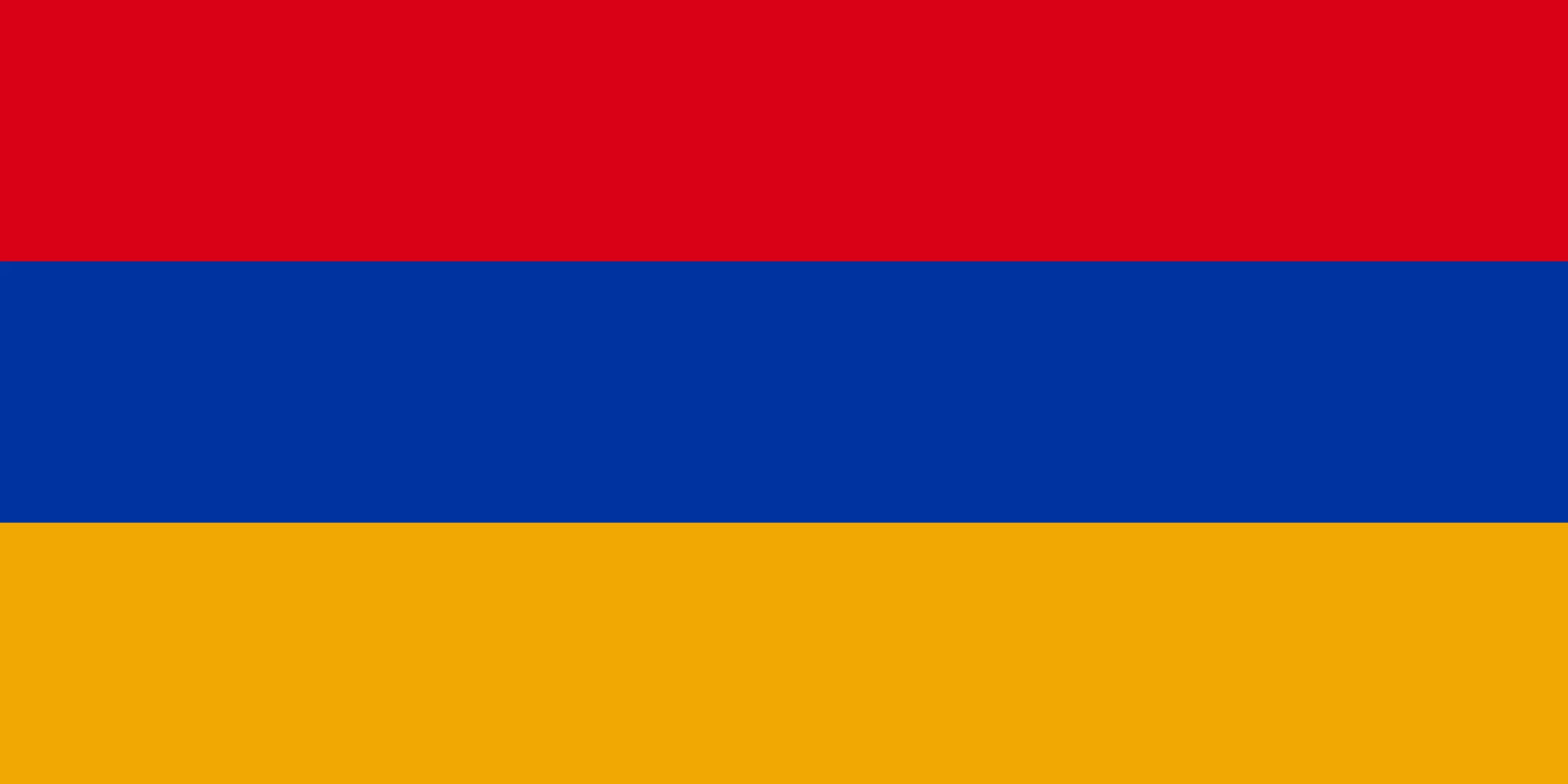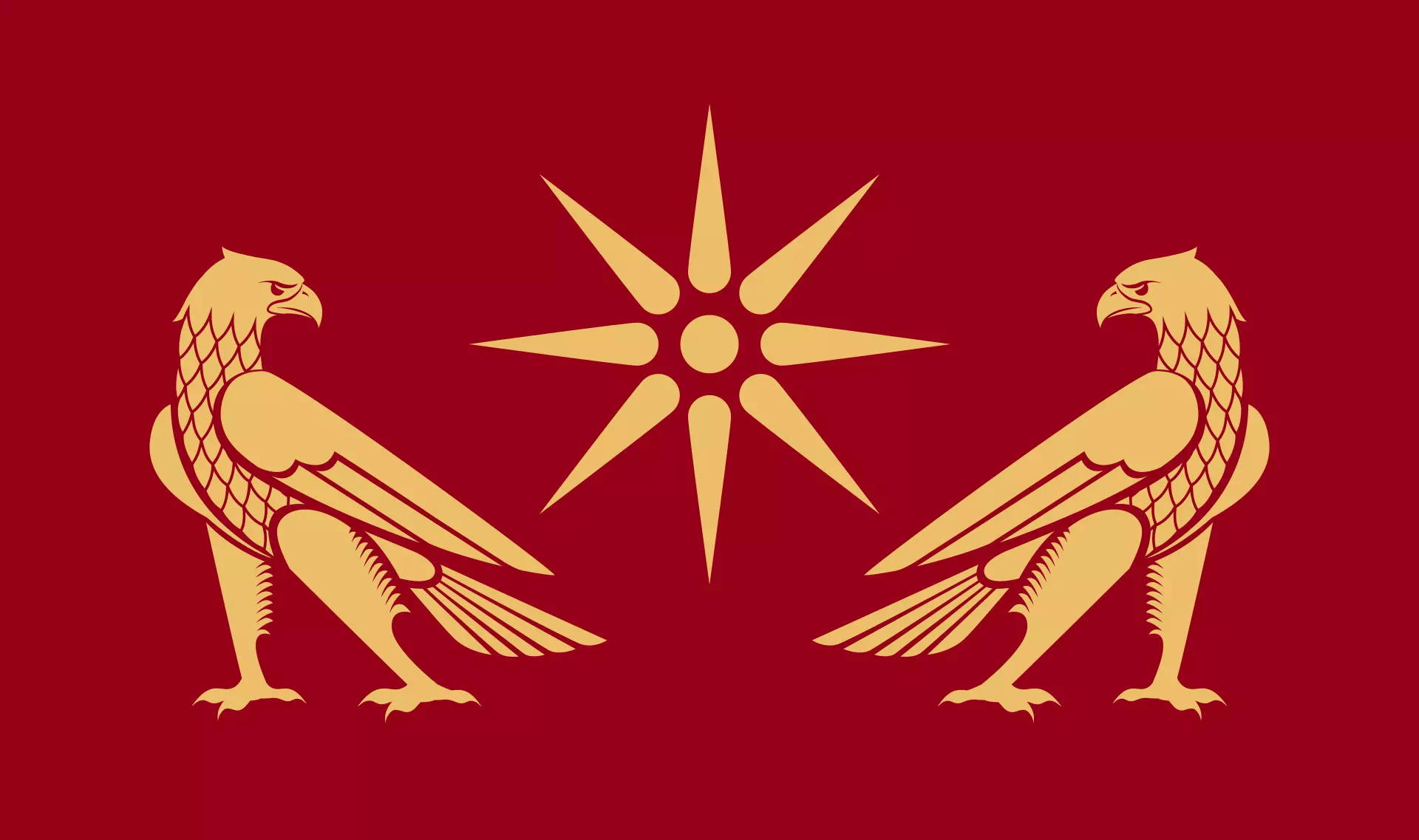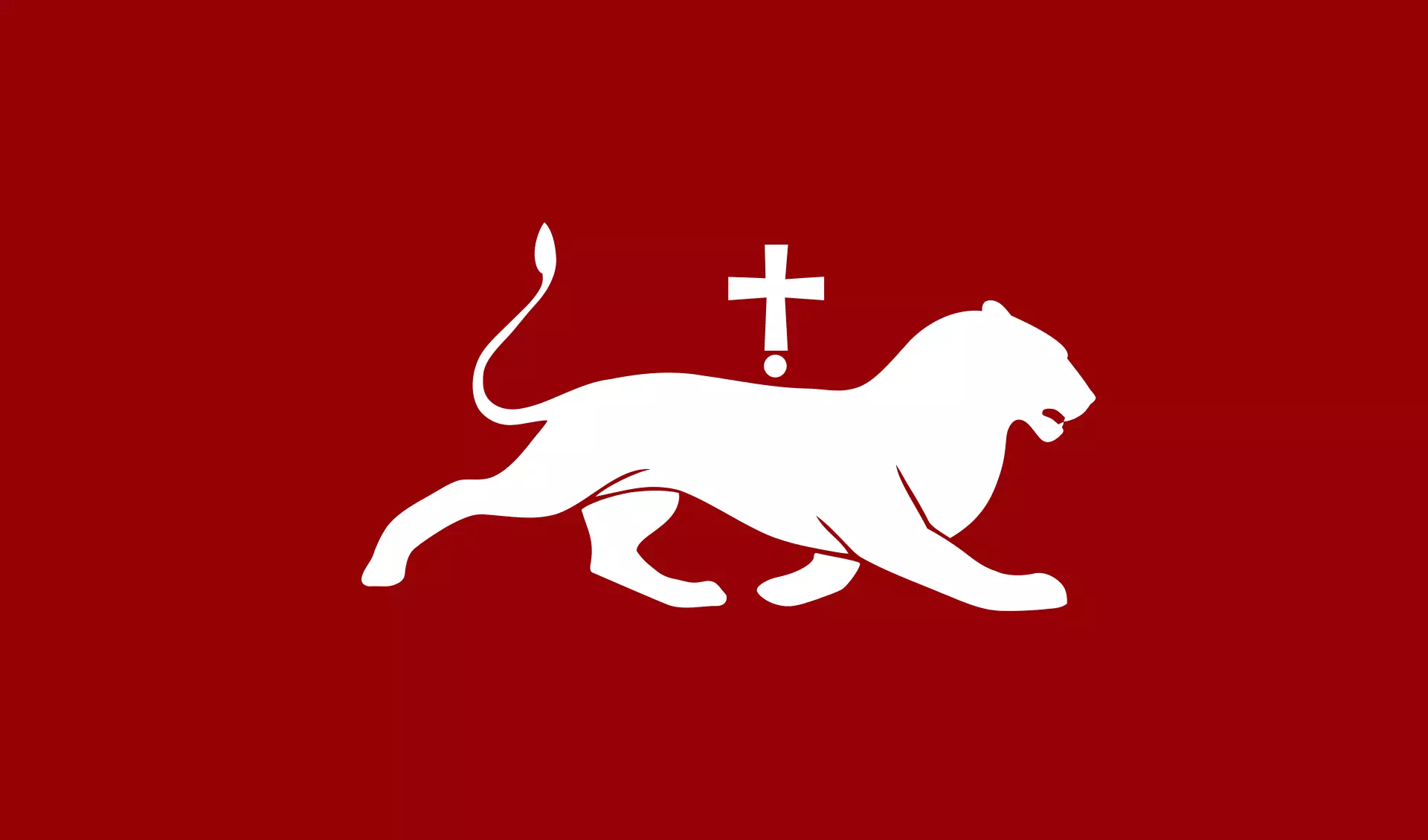
Armenia has had many flags over the centuries. For centuries, ruling dynasties depicted various animals on their flags, symbolizing certain character traits. Flags were hoisted on the battlefield, just before the start, as a symbol. The first state flags date back to the 1st-5th centuries AD. For example, during the reign of Greater Armenia, the flag of Tigran the Great, of the Artaxiad dynasty, was used. Researchers have reconstructed it from descriptions—a red or purple cloth bearing the family crest—two eagles with a sun between them.

The oldest flags are approximately 2,000 years old. The first banners associated with Armenians were military flags. Battle flags were made entirely of wood and decorated with carvings of symbolic animals.
In the Middle Ages, during the reign of the Bagratuni dynasty, Armenia gained independence in 885 and adopted a flag consisting of a dark red cloth depicting a white leopard and a Christian cross. Today, the “Ani leopard” from this flag also features on the flag and coat of arms of Gyumri, the second largest city and cultural capital of Armenia. Unlike the flags of Greater Armenia, the flag of the Armenian Kingdom was not the flag of the ruling dynasty.

The Symbolism of the Armenian Flag and the Meaning of its Colors
The national symbol of Armenia is called the “eraguyn,” or Armenian tricolor. The meaning of the Armenian flag varies. The official interpretation of the colors is set out in the 2006 Law “On the Flag,” and its appendix provides a standard sample of the flag. The red, upper stripe, symbolizes the Armenian Highlands and the people’s centuries-long struggle for their existence. Blue expresses the desire for a peaceful life, and orange represents a love of work.
There is a more simplified interpretation:
red represents the spilled blood of Armenians
blue represents the clear sky above the country;
orange represents fertile lands.
The prototype of the modern tricolor appeared in the 11th century. The flag consisted of red, blue, and yellow stripes. The stripes were associated with three members of the ruling Rubenid dynasty. One was the king, another the patriarch of the Armenian church, and the third led the army. In the 14th century, A white stripe, symbolizing the Christian faith, was added to the tricolor. In the 15th century, the kingdom disintegrated, and the state symbols were abolished. The lands of Armenia were incorporated into Turkey, Persia, and the Russian Empire (from the 19th century), but did not have their own flag.
In 1990, Armenia achieved sovereignty. The flag introduced in 1918 became the symbol of the independent republic. In 2006, a state law on national symbols was approved. June 15, the date of the law’s adoption, became Flag Day. This holiday has been celebrated annually since 2010.